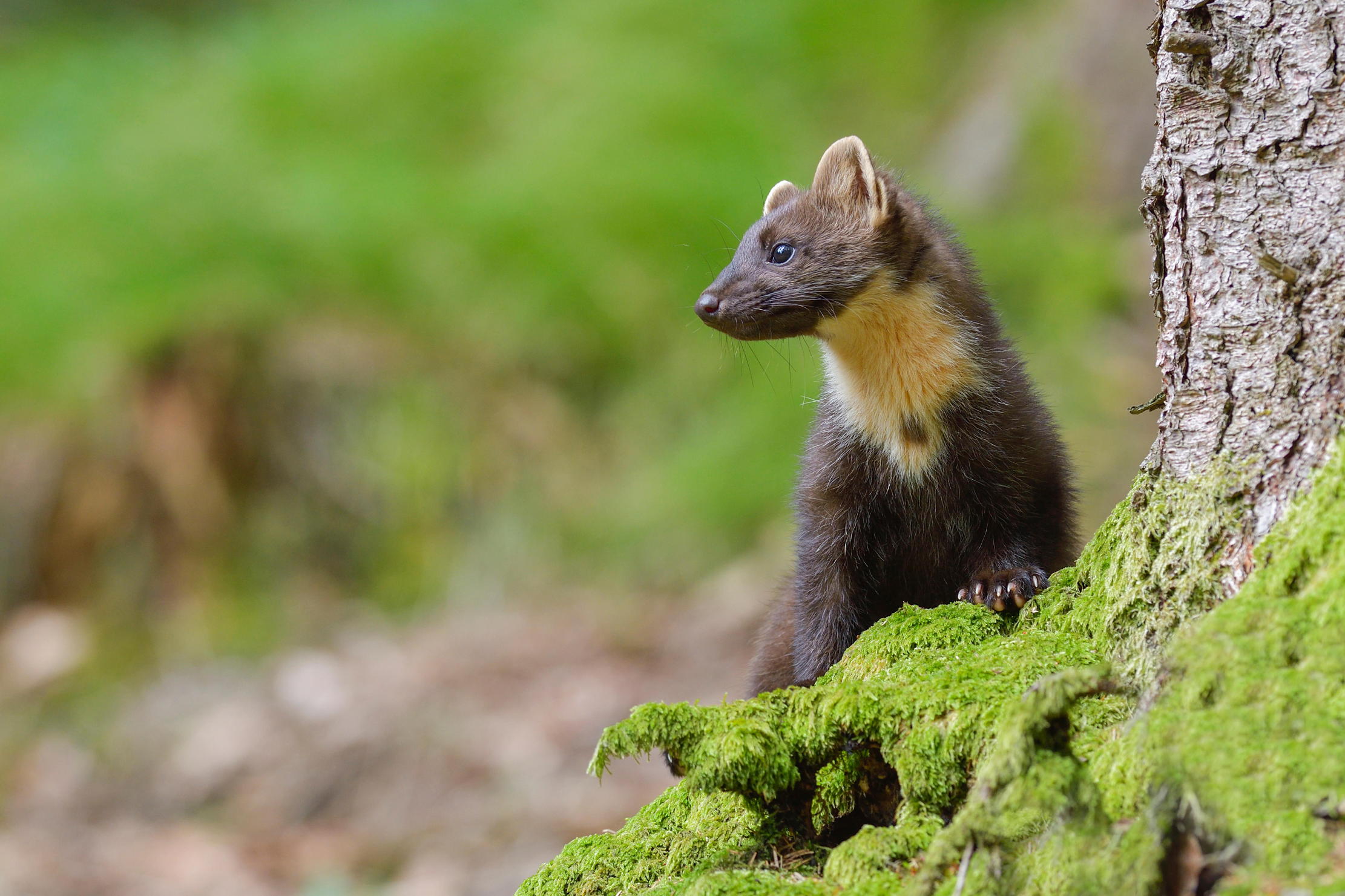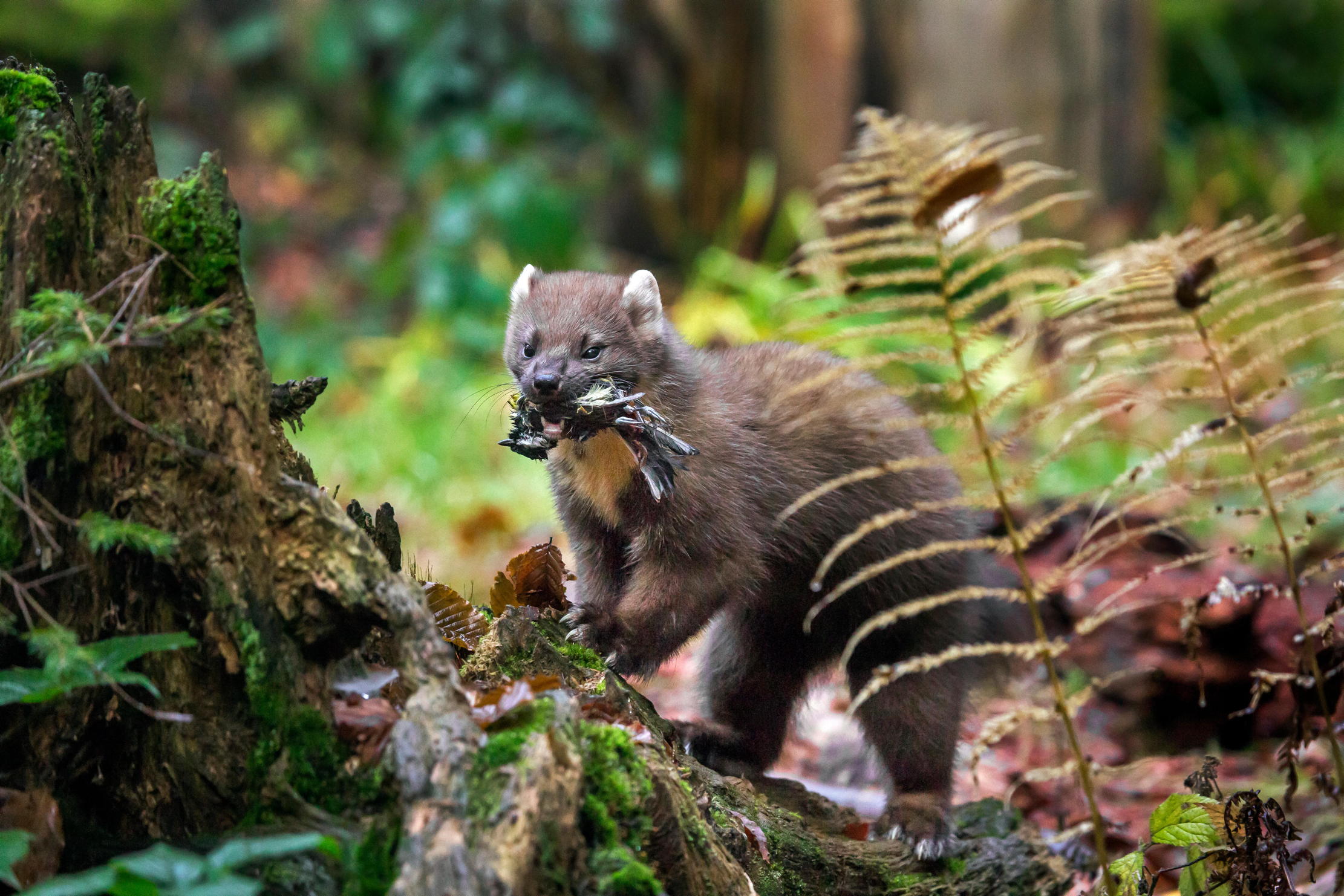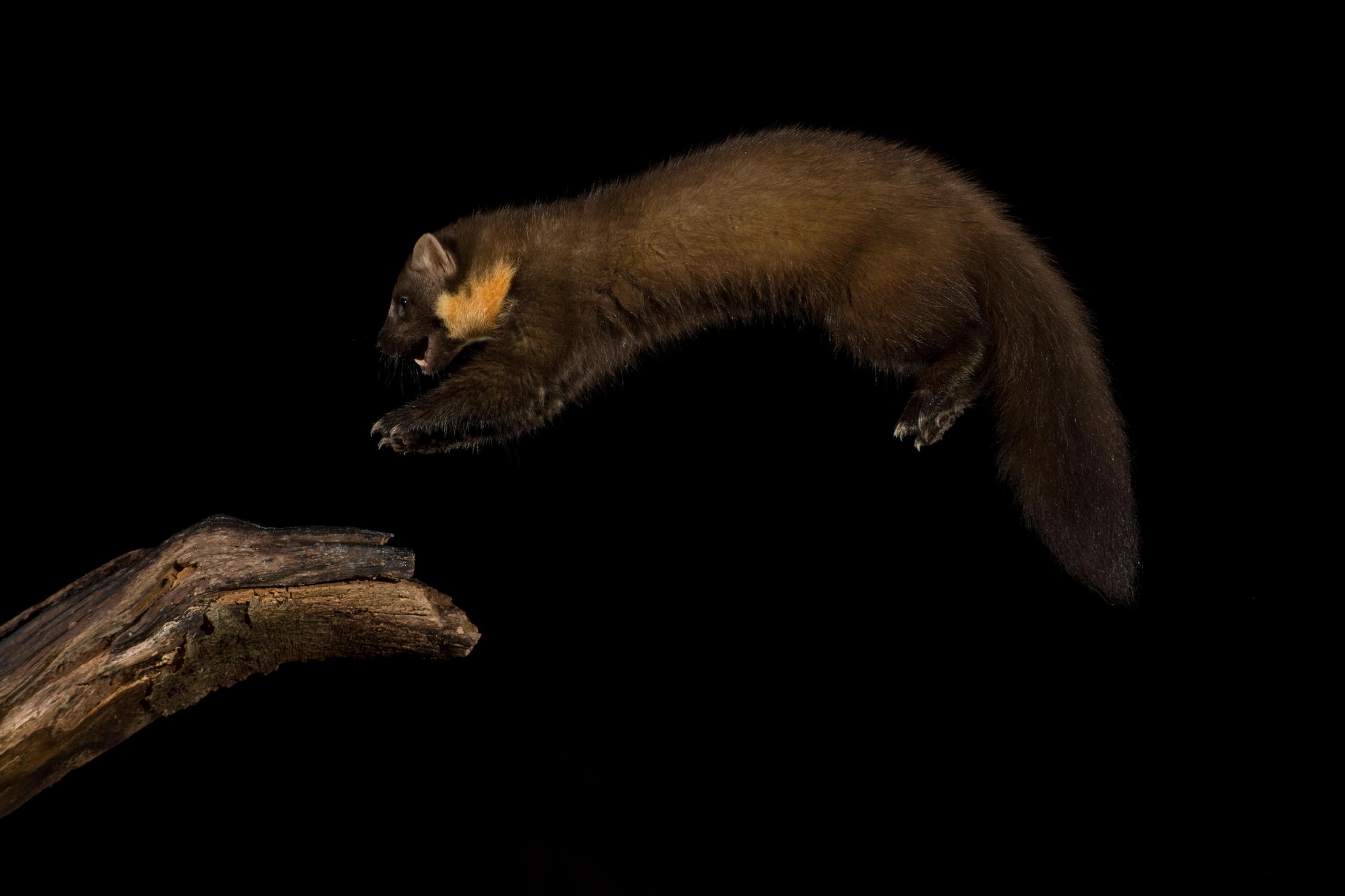The pine marten is a predatory force to be reckoned with
The pine marten may have a taste for jam sandwiches, but its razor-sharp claws and appetite for eggs and grey squirrels makes it a predatory force to be reckoned with.


For my 18th birthday I received, wrapped in a piece of purple tissue paper, a piece of roadkill that had been scavenged from the side of the A9 just north of Beauly. It came, as all taxidermied pine martens must, with a certificate to confirm that it had died in unfortunate circumstances (in this instance when hurrying across an accident blackspot).
Pine martens are a protected species and to kill one deliberately can result in up to six months in prison. That said, the greatest penalty that has yet been passed down was in 2023, when a 54-year-old man was hit with a £9,700 fine, part of which was for a pine marten-trapping offence.
My pine marten, the road traffic-accident victim, had been fashioned into a sporran by Kate Macpherson, who has been at it for decades in Invernessshire. She currently has — which may be of interest for those of you who wear kilts — fox, mink and red squirrel sporrans for sale.
It’s worth noting that she is keen to stress that if she didn’t scrape these creatures up off the roads, their corpses would simply be ‘thrown in a ditch’. ‘They would be wasted. Nobody would ever get to see the beauty of these animals, so it’s simply a way of preserving them,’ she reasons.
At this current moment in time, my pine-marten sporran is nowhere to be found. I last recall having it, quite some years ago, when dancing an eightsome at the Aboyne Ball — do note that, if you’re up that way, it has ‘PG’ embossed on the back and there is a substantial reward — of a year’s supply of muntjac pies — for its recovery.

Pine martens might seem cute, unless you are a small mammal or bird or egg or jam sandwich or....
'Pine martens were known as "the scourge of the glen" and shepherds told undoubtedly tall tales of them killing sheep by biting their noses'
My pine marten, when it died in about 2010, would have been one of a population of about 2,000 and that number was on the up. In the 19th century, numbers crashed and, in some glens, they were locally extinct due to rigorous persecution by gamekeepers. However, in the late 20th century, as a result of fewer keepers being employed due to socio-economic changes, the species expanded rapidly. It’s also important to point out that forestry, which for centuries was torn down to provide timber and also to limit wolf habitat, has been increasing in Scotland, which means pine martens have more and more places to live.
I’ll always remember Ewan Archer, the brilliant keeper and conservationist on the Kinveachy estate in Invernessshire, telling me that when he was a boy there were countrymen in Speyside who had never seen a pine marten. Yet, he went on, in recent years they have become regular fare. It’s hard not to be charmed by them — they are wily little predators with eyes like shards of coal. Although, for men such as Ewan and his beloved capercaillie, they present a bit of a conundrum. Pine martens regularly raid the birds’ nests, taking chicks and eggs.
Exquisite houses, the beauty of Nature, and how to get the most from your life, straight to your inbox.
Therefore, with a mere 500 capercaillie left in Scotland, this predation is a cause of concern. As do most creatures, pine martens go in for easy snacks — my cousins spent their childhood years in the West Highlands leaving out jam sandwiches for them. They are known to like sweet things, but they are also remarkable predators. Their claws are semi-retractable, which keeps them razor sharp, and their ability to traverse the land (from the tree tops to even being able to swim and dive underwater) means that pine martens can and will take prey in places that a lot of creatures can’t get to.
However, as with almost everything in the countryside, nothing is all good or all bad. Anyone who wholesale condemns pine martens should be taken to task. Nuance and complexity is the state of Nature. In his fascinating and immensely well-researched new book, Pine Marten: The Secret Life of Martes martes, the wildlife documentary maker Dan Bagur chronicles the life of the pine marten and the many factors that affect its conservation status.
Fascinatingly, the pine marten is now recognised as a soldier in the fight against invasive grey squirrels, which damage British woodland by stripping tree bark, causing trees to be exposed to diseases. It is also well known that greys carry squirrel pox, which doesn’t affect them, but kills our native red squirrels. Dan writes that: ‘It has been observed that in areas where pine martens have returned in sufficient numbers, they have brought with them the return of the native red squirrels, along with a reduction in the population of grey squirrels.’
The primary reason for this happy occurrence is that grey squirrels tend to weigh twice as much as reds. Consequently, reds can escape hungry pine martens by running out onto thin branches where greys would fall. Interestingly, in Europe, where lynx and pine marten are both present, pine martens also utilise ‘the relative weakness’ of thin branches to avoid being eaten by their would-be predators. As far as predation in Britain goes, the main concern for the pine marten is the fox, but golden eagles are also known to eat them when the opportunity arises.
One of the great values of a book such as Dan’s is the intimate insight it provides into a creature that, although increasing in terms of its population, is actually quite hard to see. Even where their numbers are plentiful in Britain, in places such as the Forest of Dean in Gloucestershire and in parts of Cumbria, they are often only spotted when they are dead on the roads.

The treetops are the natural domain of this wily mustelid.
'My cousins spent their childhood years in the West Highlands leaving out jam sandwiches for them'
My favourite literary depiction of the pine marten comes from the diaries of Lady Isabella Augusta Gregory, who was a key figure in the Irish Literary Revival. It perfectly captures their ephemeral charm. Lady Gregory writes of ‘a marten’ being caught in a trap and being brought to her stables where she locked up her dogs and: ‘The little beast made for the door like a flash and vanished into the nearest edge of the Shanwalla Wood. A little later, when the dogs were released, they had not forgotten their disappointment, and were on the trail in a moment. But there was no chance for them. It had travelled its hundred acres (as our cats are said to do in the night time) in the treetops above our heads.’
It’s incredible how two very closely related creatures can exist in different habitats. The pine marten, Dan reveals, is a close relative of the badger, but where the badger lives underground and snuffles out at night, the pine marten nests in a ‘marten maze’, a series of tunnels above ground in dense undergrowth. When night falls, it spends the dark hours leaping through the tree tops. Incredibly, pine martens can angle their tails to direct their flight. They don’t, as badgers do, sleep during the day. Instead, they have periods of activity, sometimes as many as six in a 24-hour period, broken up with short naps. They also make themselves known, during the summer, in daylight hours.
Humans in Britain have had a relationship with pine martens for time immemorial. Thousands of years ago, we were wearing their thick pelts (so thick that they don’t require bedding material) and then, in the Victorian period, pine martens were known as ‘the scourge of the glen’ and shepherds told undoubtedly tall tales of them killing sheep by biting their noses. Dan counters this historic demonisation by writing about the well-known wolf reintroduction in Yellowstone in the USA, which reduced elk and promoted biodiversity by allowing young trees to flourish. His point is that predators are a vital part of a balanced ecosystem and he’s right, except, as ecosystems go, rural Britain is far from balanced and it will take far more than simply introducing predators to create balance.
Ewan, when I spoke to him, asked me how many predators equates to too many predators? He believes, as do most keepers, that pine martens have their place, but it’s undeniable that there are places in Britain where prey species, such as the capercaillie, are doing very badly as the number of predators soar. The pine marten might soon become like the red kite: such a conservation success story that it borders on being a nuisance. I can’t imagine that anybody would want to go back to the bad old days of eradicating pine martens, but I can imagine that practical conservationists and keepers would be more enthusiastic about their spread if it was going to be possible to manage their numbers in the years to come if necessary.
That sliver of idealism is my only criticism of Dan’s otherwise excellent book, which is a testament to the immense value of spending time quietly watching the wild creatures with which we’re lucky to share this increasingly wildlife-depleted world.
This article originally appeared in the July 23 issue of Country Life
Patrick Galbraith is an author, journalist, former editor of Shooting Times, and a regular contributor to Country Life.
